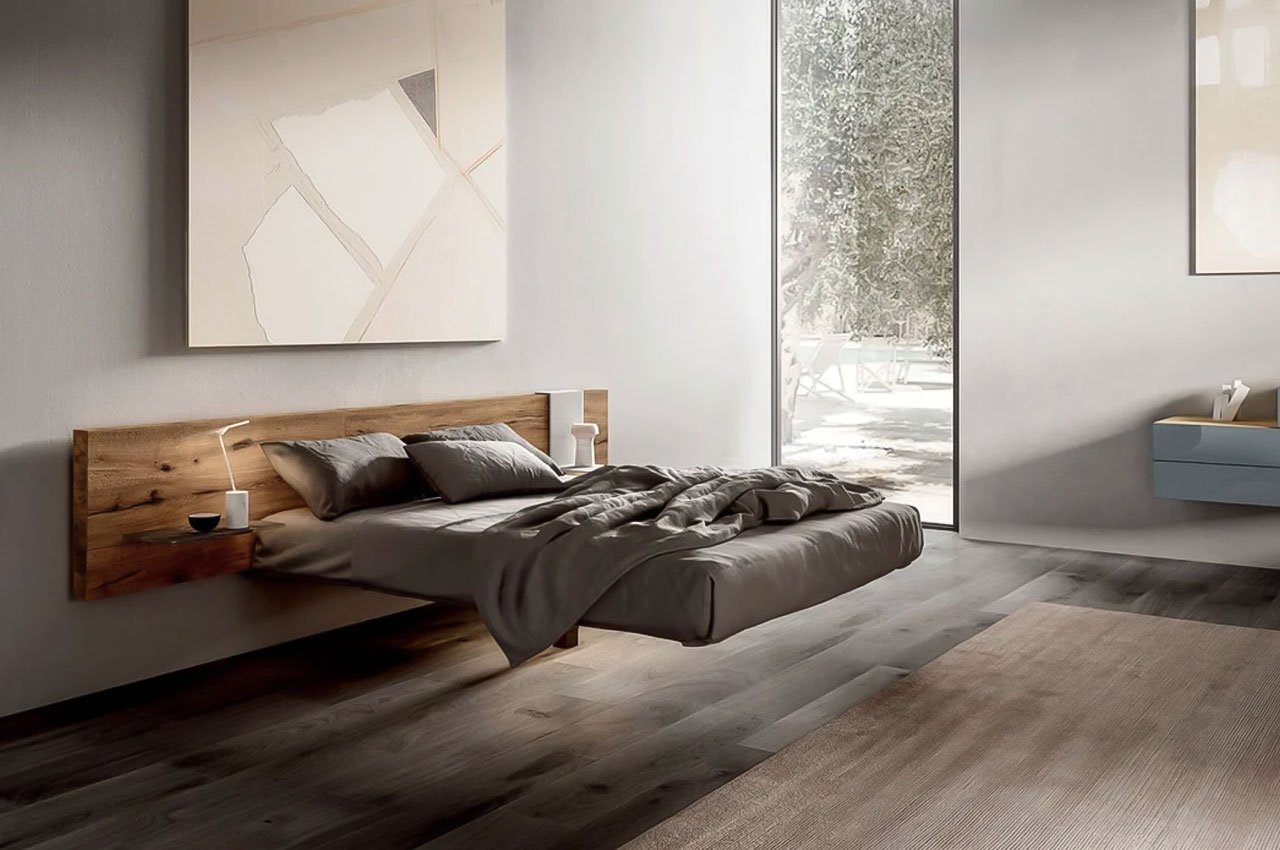
Designer: Lago Design
Bedroom décor plays a crucial role in providing optimal sleep that is essential for good health and the emotional well-being of its occupants. Considering we spend nearly one-third of our life resting, appropriate décor can transform the bedroom into a sleep haven and offer the perfect environment for rest and positivity. Note that even small changes can positively impact our sleep cycle and help control insomnia or sleep disorders. Here are tips for creating a relaxing ambiance and a décor best suited for sound slumber.
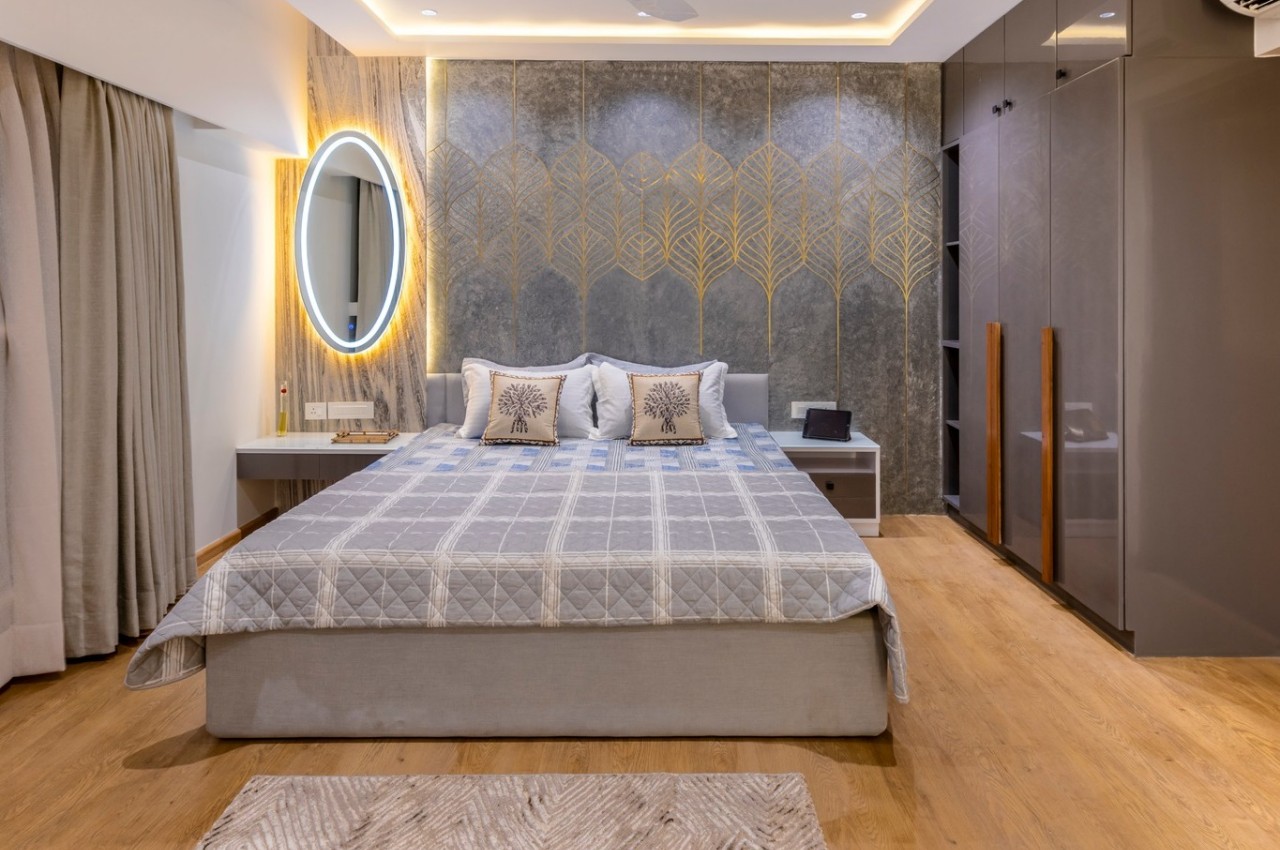
1. Incorporate A Relaxing Color Palette
A soothing color palette with muted colors is conducive to sleep and helps create a calm atmosphere. A soft color palette of grays, light blue, silver, lavender, pale yellow, moss green, and peach contribute to a sound sleeping pattern. The best part about pastel colors is that it adds color and imparts a balanced look to the space. Going for cool colors and avoiding warm colors like red and yellow is highly recommended. Don’t forget to introduce your personal style, and make sure to choose a color that relaxes you. To create a cocoon-like atmosphere, create an accent wall in a deep emerald green or navy blue shade and combine it with white or off-white walls. One can introduce pops of colors in cushions, rugs, art, and statement furniture. Additionally, it is advisable to go for a matte paint finish instead of a glossy finish for a restful look.
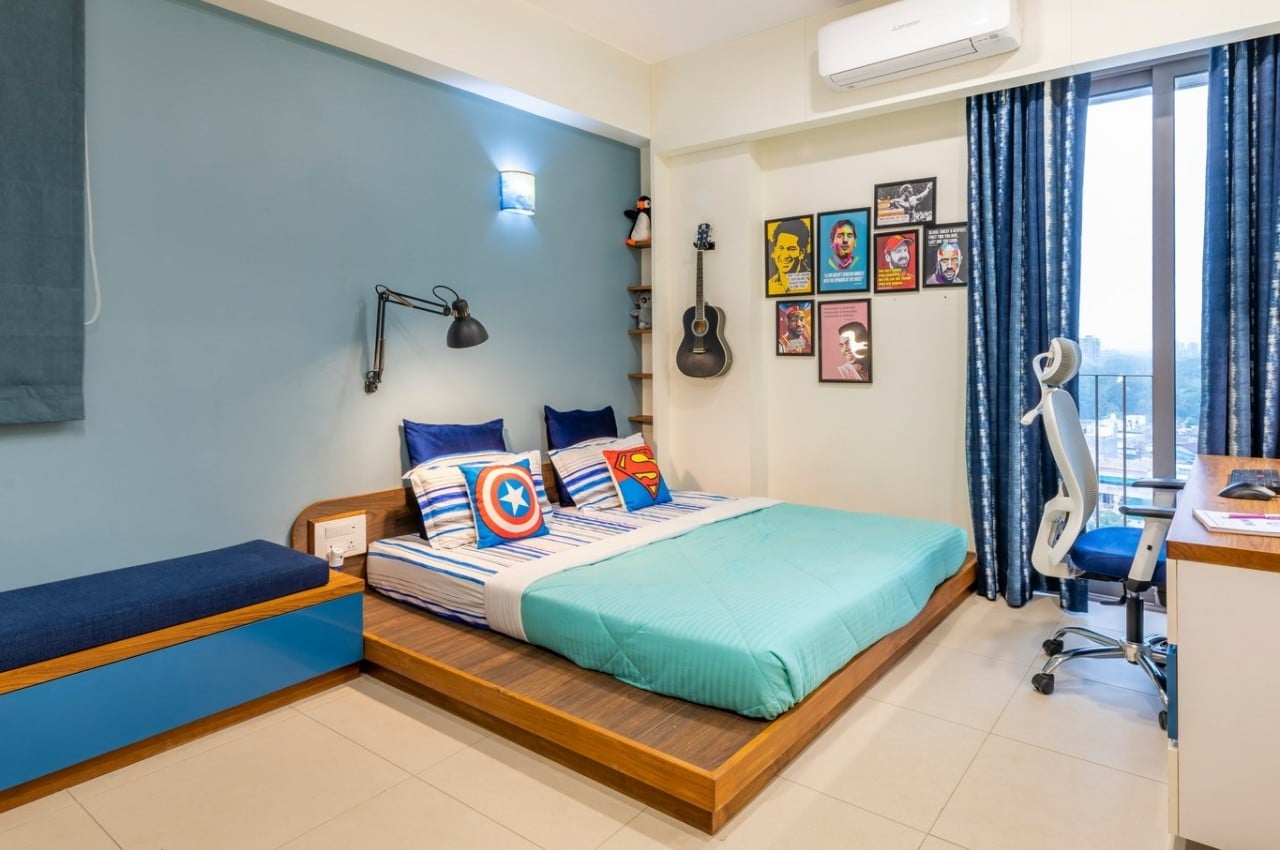
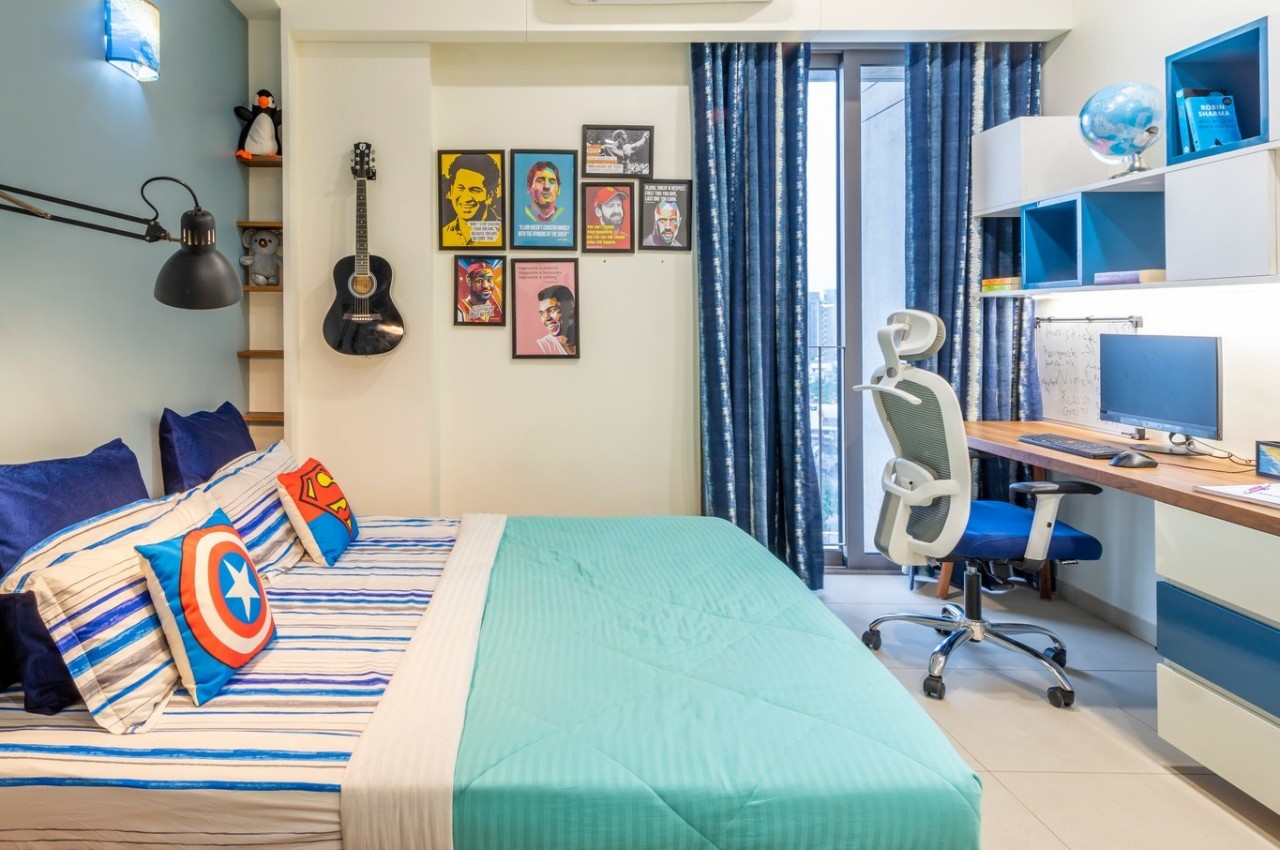
Designer: Tathya Macwan
2. Invest in a Comfortable Bed
The bed forms the bedroom’s centerpiece, so position the bed in the center of the interior wall and make space for side tables on either side. The bed should be ergonomically designed according to the height of the end user. In particular, the design should allow the hips and knees of the occupant to be aligned, and the feet should be flat on the floor when sitting. Consider a reading nook near a window to encourage reading so that it is also a transition to bed during the night.

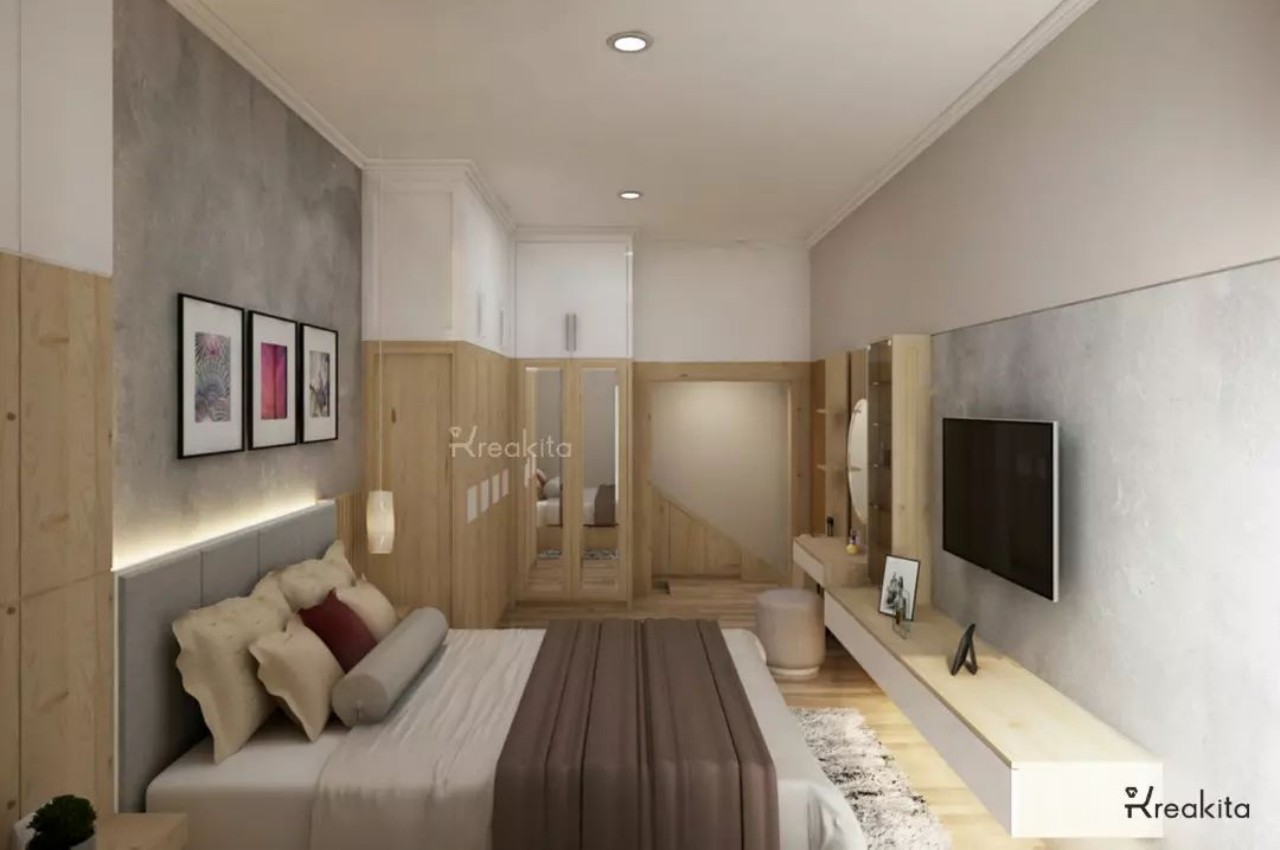
Designer: Kreatika
3. Use Comfortable Bedding
Maximize comfort in the bedroom and create the mood for sound sleep. Use crisp and luxurious white or ivory sheets with a thread count of 300 to 400. Change the linen at least once a week, and add a soothing fragrance while washing to prevent the build-up of dust and allergens. By neatly making the bed daily, one can add to the aesthetics and imbibe positivity. Also, do not clutter the bed with too many pillows. Pick the right pillow for a sound sleep so that the neck and spine are aligned, and go for two standard pillows and just one accent pillow. For the sheets, quilts, and blankets, opt for natural fabrics and materials like cotton, linen, bamboo, wool, and linen. They are responsive to body temperature and do not trap heat. Note that synthetic materials tend to absorb heat and result in perspiration or discomfort during the night.
Invest in a new mattress that offers optimum comfort, balance, and back support. Don’t go for a mattress that is too soft or firm; changing it every 7 to 10 years is essential.
Tip: As changes in body temperature can disturb sleep, consider a mattress that allows good airflow and less heat retention. The best materials for the mattress are memory or latex foam with a thin breathable cover.


Designer: Chelsea Allen (Down Home Projects)
4. Use Warm White Light
Light plays an integral part in maintaining our natural circadian rhythm. Go for warm white light instead of bright overhead lights, as soft lighting allows one to sleep better. Install dimmer lights so that the body can unwind and enter sleep mode. Some of the best light fixtures for the bedroom include table lamps, reading sconces, and recessed lighting to lightly wash the walls.
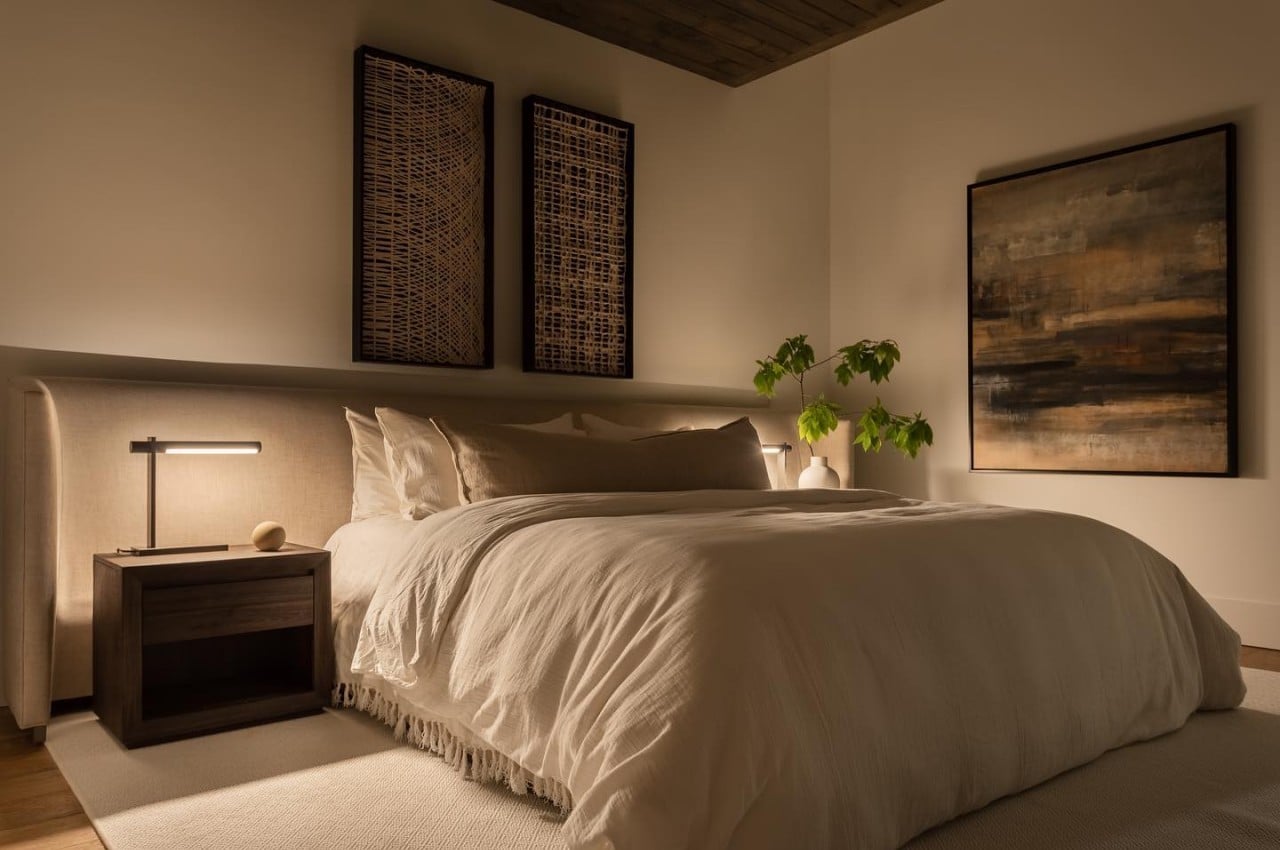
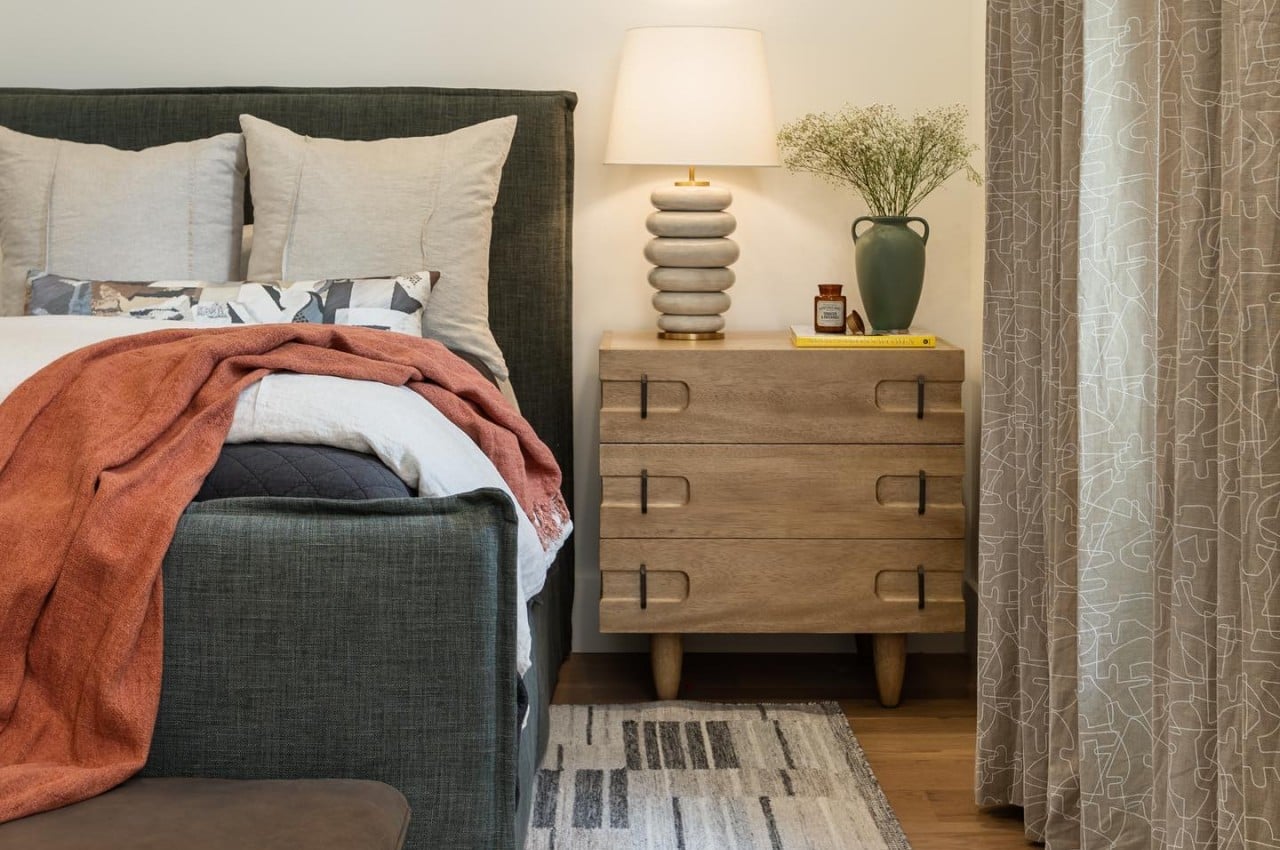
Designer: Cheatham Fletcher Scott
5. Go for Blackout Curtains
For restorative sleep, it is essential to block any light that is filtering into the indoors. Transform the bedroom into a dark, serene space by adding blackout liners for the Roman blinds or drapery. One can also opt for curtains with heavy fabric and light-blocking properties. This is one of the most cost-effective ways to prevent natural light penetration during the wee hours of the day.
6. Create a Clutter-free Space
A messy and cluttered bedroom can affect our sleep, create stress, and cause anxiety. For a relaxing bedroom décor, getting rid of clutter and keeping the storage items out of view with adequate built-in storage is essential. Nothing that is not required in the bedroom, like extra books and to-be-folded laundry, should be there. Make optimum use of wall space with shelves to free up floor space and impart an airier feel to the room. Also, make it a habit to clear clutter and organize it daily so that space does not get overwhelmed. Finally, go for a storage bed and make sure that the underside of the bed does not become a dumping station for keeping extra items, as it may release negative energy.
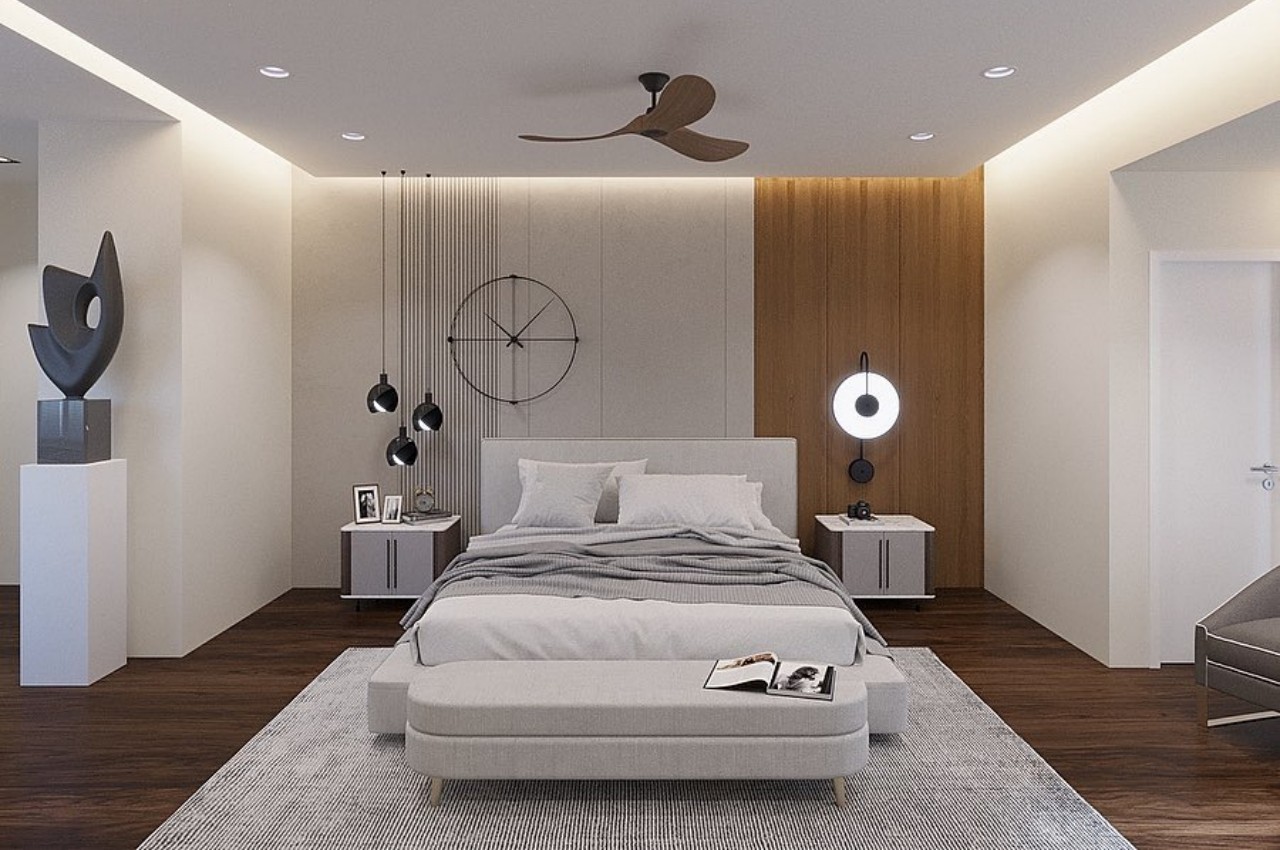
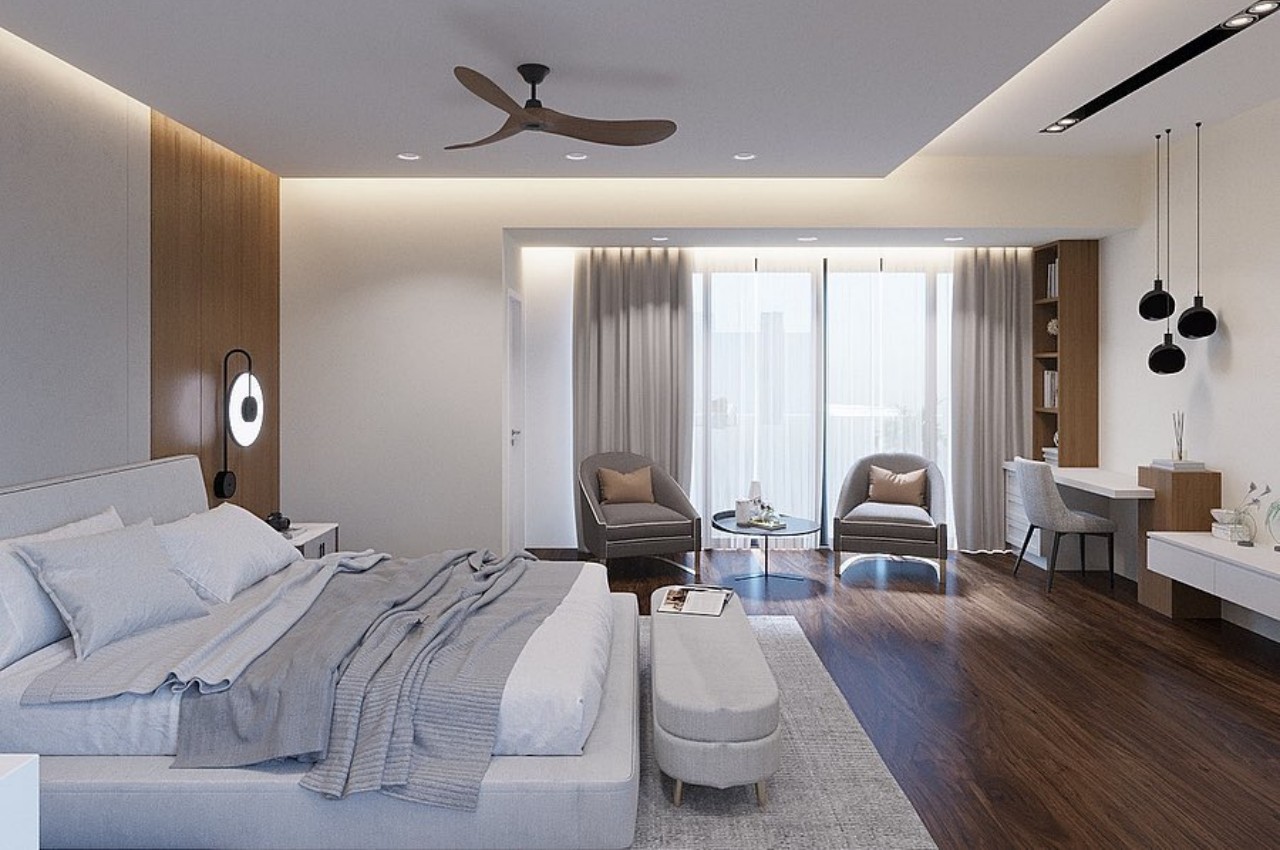
Designer: LANAI Design Studio
7. Absence of Electronics
Minimizing or eliminating distractions by removing electronic items like the laptop away can remind you of office assignments, tablets, or TV, as the light from electronic items can affect your sleep. Keep the charging station of the phone outside the bedroom or in a spot where you can hear the ring in case of an emergency. It is always good to camouflage the TV in a cabinet or armoire. Watching TV can result in disturbed sleep.
Tip: As per studies, avoid using electronic devices an hour before sleep. This is because screen time may expose one’s eyes to blue light. It can disturb the circadian rhythm and negatively affect the quality of sleep.
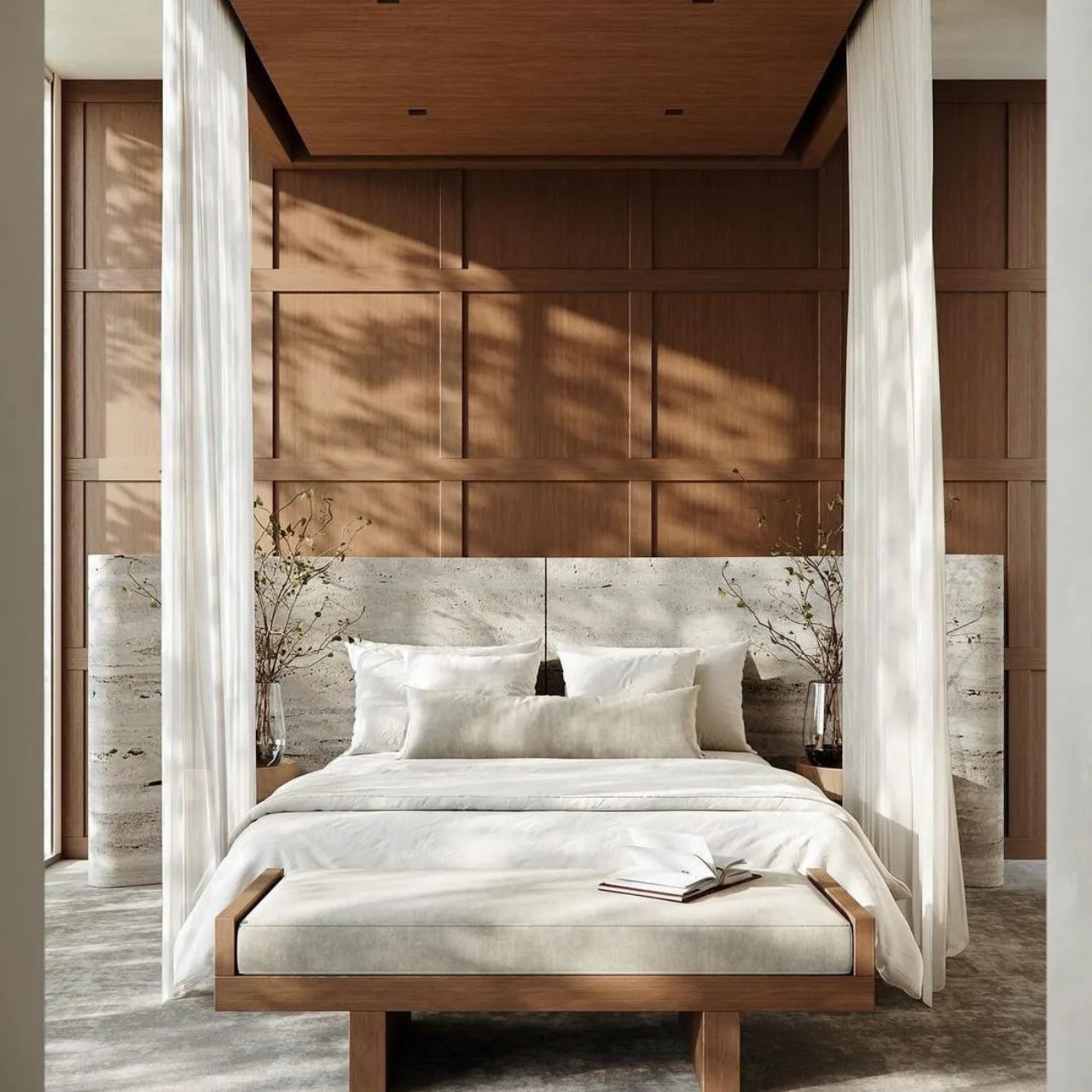

Designer: Norvo Design
8. Create A Healthy Space
Ensure proper ventilation and airflow to create a healthy space promoting good sleep. This is also one of the best ways to control dampness and mold growth. Additionally, bringing in sunlight during the day can uplift our mood and energy and enable a good sleep pattern during the night. Live plants and flowers can help one feel calm and bring an outdoorsy vibe into the interiors. It’s also a great way to add life, personality, and color into the space. Finally, infuse warmth with family pictures that depict good memories so that the bedroom is your personal abode and is also rich in detail. The temperature should be between 60 and 67 degrees, and humidity should range from 30% to 40%.


Designer: Barn & Willow
9. Reduce Noise
External noise may disturb sleep and have an adverse effect on our health. The area around the bed is equally important, so add a rug as it helps in reducing noise; go for premium quality rugs and carpets as they provide a warm and comfortable underfoot. Finally, go for double-glazed windows that drastically reduce noise and create the ideal environment for good sleep.
10. Add Fragrance
Aromatherapy creates a calming ambiance, transforming the bedroom into a stress-free and anti-anxiety zone. Fragrant flowers, scented candles, and essential oils like lavender and jasmine are perfect for creating a calm and relaxed vibe within the interiors.


Click Here to Buy Now: Battery-Free Aroma Diffuser ($249)
Integrating the above tips into your bedroom’s decor will help create a calming space to ensure the sweetest dreams.
The post How to design your bedroom for better sleep first appeared on Yanko Design.
from Yanko Design

0 Comments